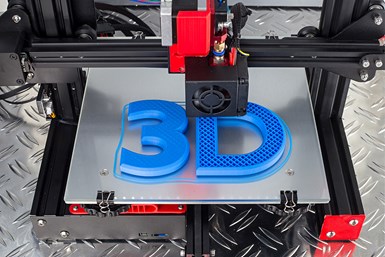PAMA Supports 3D Printing Innovation, Standards
PAMA is a collaboration between the U.S. Department of Commerce’s National Institute of Standards and Technology (NIST) and RadTech, the nonprofit trade association dedicated to advancing ultraviolet and electron beam technology.

PAMA is dedicated to helping drive innovation in 3D printing industries. Photo Credit: Getty Images
The Photopolymer Additive Manufacturing Alliance (PAMA) has formally launched as an organization dedicated to the advancement of research and technology in the 3D printing industry. The group kicks off its activities at RadTech 2022 in Orlando, Florida, May 9-12, 2022.
PAMA is a collaboration between the U.S. Department of Commerce’s National Institute of Standards and Technology (NIST) and RadTech, the nonprofit trade association dedicated to advancing ultraviolet and electron beam technology.
According to the group, the field of photopolymer additive manufacturing (AM) spans several technologies, including stereolithography (SLA), digital light processing (DLP), liquid crystal display (LCD) and binder jet 3D printing techniques. These techniques are currently widely used in manufacturing consumer products such as dentistry, jewelry, eyewear and sporting equipment. They also hold great promise for applications in personalized medicine, including 3D printing of tissue scaffolds and bone grafts, and for manufacturing in space.
“PAMA’s overarching goal is to better connect the industrial photopolymer supply chain with end-user experiences in 3D printing,” says David Walker, chair of the PAMA executive advisory board and co-founder of Azul 3D. “In a widely diversified market, the language we use to describe our technology matters. Our industry’s terminology and protocols are not yet well-aligned or agreed upon, making it nearly impossible for end consumers to make informed and accurate comparisons between the existing technologies.”
According to Walker, this lack of transparency, coupled with an over abundance of inconsistent marketing claims, has led to substantive roadblocks in the adoption of 3D printing in a safe and reliable way within manufacturing ecosystems. “Simply put — a lack of unified standards and practices is holding Additive Manufacturing and Industry 4.0 back,” he says.
PAMA says it already has commitments from critical institutions and end-users, and is now accepting new members. “PAMA will help drive innovation in this critical manufacturing sector by supporting the development of standards and protocols, and by providing a forum where members can share research and best practices,” says Dianne Poster, a research chemist and senior advisor at the National Institute of Standards and Technology (NIST). NIST promotes U.S. innovation and industrial competitiveness by advancing measurement science, standards and technology in ways that enhance economic security and improve our quality of life.
Related Content
-
ActivArmor Casts and Splints Are Shifting to Point-of-Care 3D Printing
ActivArmor offers individualized, 3D printed casts and splints for various diagnoses. The company is in the process of shifting to point-of-care printing and aims to promote positive healing outcomes and improved hygienics with customized support devices.
-
Aircraft Ducts 3D Printed in Composite Instead of Metal: The Cool Parts Show #68
Eaton’s new reinforced PEKK, tailored to aircraft applications, provides a cheaper and faster way to make ducts compared to formed aluminum.
-
3D Printed Lattices Replace Foam for Customized Helmet Padding: The Cool Parts Show #62
“Digital materials” resulting from engineered flexible polymer structures made through additive manufacturing are tunable to the application and can be tailored to the head of the wearer.














